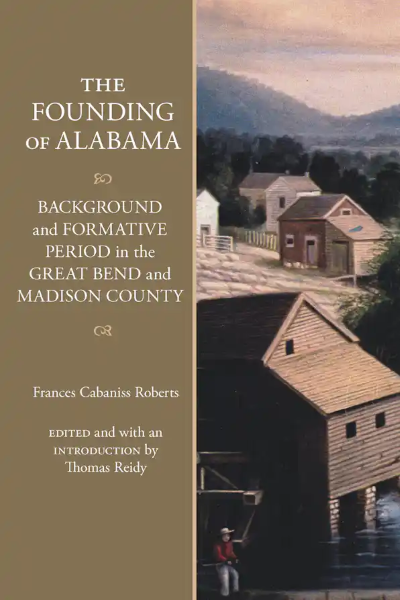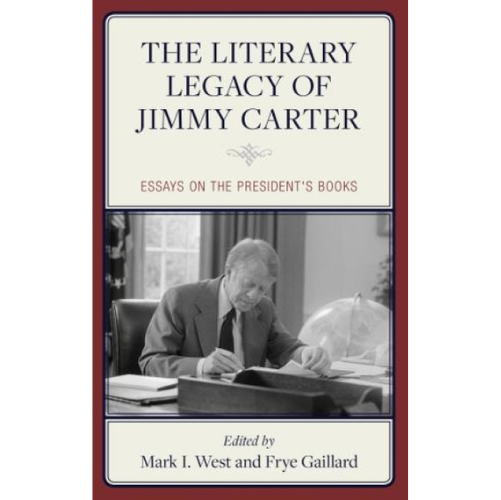The Founding of Alabama: Background and Formative Period in the Great Bend and Madison County
By Frances Cabaniss Roberts, edited and with an introduction by Thomas Reidy
University of Alabama Press, 2020
Paper, $39.95
History/Alabama
Reviewed by Scotty E. Kirkland
One of the lasting contributions of Alabama’s multifaceted, three-year celebration of the bicentennial of statehood was the number of fine books it produced. The Founding of Alabama, the long-awaited publication in book form of Dr. Frances Cabaniss Roberts’ dissertation, certainly fits into that category. Available here widely for the first time, and edited with a thoughtful introduction by Dr. Thomas Reidy, The Founding of Alabama reminds us of the outsized role North Alabama and its citizens played in shaping the early political and economic history of the Yellowhammer State.
For those who know him, it comes as no surprise to learn in the introduction that Huntsville attorney Julian Butler championed the publication of this book. Few people in North Alabama worked harder than he did to ensure the lasting benefits of the bicentennial.
Dr. Thomas Reidy, a former lecturer of history at the University of Alabama in Huntsville who now serves as executive director of the Scottsboro Boys Museum, is the book’s careful editor. His revisions to Roberts’ dissertation were slight he tells us, limited to the occasional typographical infelicity. Reidy’s introduction also offers a capsule biography of Roberts: the first woman to earn a doctorate in history from the University of Alabama, one of the earliest faculty members of the University of Alabama in Huntsville, and the author of several primary-school history textbooks.
The geographic scope of Roberts’ work was the Great Bend region, the modern-day counties of Madison, Morgan, Limestone, and Lauderdale. Madison County and Huntsville receive the most attention in Roberts’ telling of that formative period. Focused as she is on political and planter-class economic history, this is altogether right. Huntsville was the site of the state’s provisional capital, the place where delegates gathered to write Alabama’s first constitution, and home to many of its early elected officials. It was a place of great importance. And it was a place Roberts knew well. Her Cabaniss-family ancestors were part of the planter class, though most of their earlier wealth had dried up before she was born in 1916. For her research, Roberts often relied upon family papers as part of her bevy of primary sources. Her sense of history and her family’s genealogy, then, were fostered together. To her credit, she never turns her academic pursuits into exercises of reflected glory for her long-dead kinfolk.
Reidy casts Roberts’ dissertation of the mid-1950s as a product of the Cold War. What happened in the Great Bend region was, in her hands, a story of the triumph of Western civilization. “Roberts informs early Alabamians with a zeitgeist conforming to her own, which was fundamentally atomistic and assumed that ‘civilization’ could be achieved only when citizens accepted individual responsibility for the burdens of society (p. 9).”
The Founding of Alabama is a sweeping work of history. But its prose does not make it so. This work was created in partial fulfillment of the rigorous requirements to achieve an advanced degree. Thus, it is not flowery; quotes and anecdotes are few. The work is sweeping because of the sheer scope of it, the amount of research required to create it. That is what makes Roberts’ work so foundational, so formative.
Of course, parts of The Founding of Alabama, written more than six decades ago, do not hold up well. The Indigenous peoples of the region are referred to in only generic, anthropological terms. There are scant references to the important roles played by women or enslaved African Americans. When reading works by past generations of historians, one sometimes must hold two competing thoughts: We can wish they had been more egalitarian in their research and writings while, at the same time, admiring the effort it took to practice the craft in an earlier era. Roberts’ bibliography reveals the primary source “spadework,” as Reidy puts it, required to complete the important dissertation.
Historians of Early Alabama have long prized their dog-eared copies of Frances Cabaniss Roberts’ dissertation. Thanks to the publication of this book, even more readers can now benefit from this pathbreaking historian’s remarkable work.
Scotty E. Kirkland is a writer and historian and a frequent contributor to Alabama Heritage and Business Alabama magazines.







Leave A Comment
You must be logged in to post a comment.